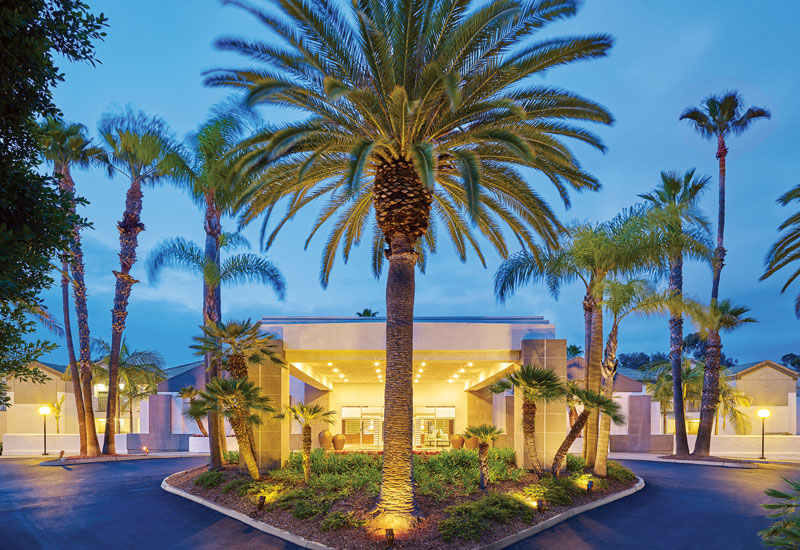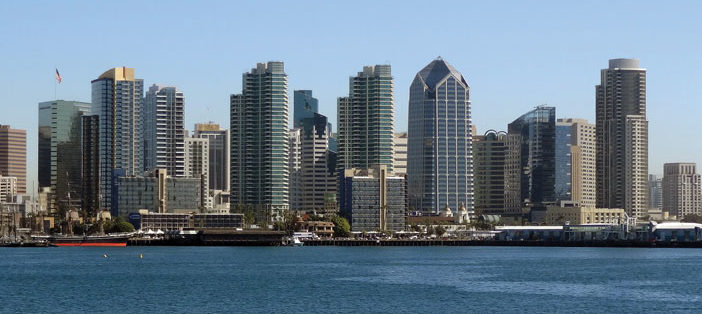SAN DIEGO—Much like the usual climate for this Southern California city, the current and future market for the hospitality industry here is sunny.
“The San Diego hotel market is firing on all cylinders,” said Mike Armstrong, principal of HREC Investment Advisors’ San Diego office. “We continue to see strong investor interest in hotels in San Diego and throughout Southern California driven by solid economic growth and exceptional fundamentals. San Diego County hotels achieved occupancies above 80% and ADR approaching $200 in 2018, and rates are up through the first quarter of this year. There has been new supply, which has impacted occupancies, but appears to be getting absorbed due to strong growth in demand.”
According to CBRE Hotels’ Americas Research, in 2018, San Diego hotels finished the year with a RevPAR gain of 5.8%. This was the result of an increase in occupancy of 2.1% and a 3.7% gain in ADR.
The city’s lower-priced properties finished 2018 ahead of its upper-priced properties in terms of RevPAR growth. The properties in this category attained a 4.6% gain in ADR and saw a 2.8% increase in occupancy. Upper-priced hotels experienced an ADR growth rate of 3.1%, along with a 1.5% gain in occupancy.
 “San Diego is a particularly strong hotel market due to a relatively diverse mix of leisure and group demand,” said Jeff Lugosi, managing director of CBRE Hotels Advisory Capital Markets. “Large conventions produce a great deal of group room nights. Additionally, the leisure market continues to remain particularly strong due to the popularity of the Gaslamp Quarter, Little Italy and the newly expanding East Village area. It has become a bit of a hub for technology start-ups and a younger demographic—Apple announced it would bring a 1,200-employee campus to the Golden Triangle area in December of last year.
“San Diego is a particularly strong hotel market due to a relatively diverse mix of leisure and group demand,” said Jeff Lugosi, managing director of CBRE Hotels Advisory Capital Markets. “Large conventions produce a great deal of group room nights. Additionally, the leisure market continues to remain particularly strong due to the popularity of the Gaslamp Quarter, Little Italy and the newly expanding East Village area. It has become a bit of a hub for technology start-ups and a younger demographic—Apple announced it would bring a 1,200-employee campus to the Golden Triangle area in December of last year.
The city has seen new supply, including the full-service InterContinental San Diego, which opened last year, as well as the first Moxy hotel in California. “There are additional smaller hotels that are slated for completion this year,” he said. “One of the recent trends in the market is that business has started to move to other parts of the city, including the East Village, where quite a bit of hotel supply is now planned or under construction. That area has become attractive for a younger demographic. Overall, there are quite a few planned or under-construction hotels; it is estimated that an additional five hotels will open in the next year.”
One area of concern for the area is whether the San Diego Convention Center will soon see an expansion. “The convention center remains undersized, causing the market to lose group room nights,” said Lugosi. “This is a significant factor in the future of the San Diego hotel market as there are planned additional hotels in the downtown area that will rely on this expansion before they ever get built. The convention center will have a large role to play in the future expansion of the lodging market.”
The expansion of the convention center hinges on a March 2020 election to approve a hotel transient occupancy tax increase that would fund the modernization and expansion. The tax would also provide billions of dollars for homeless programs and road repairs across the city.
The expansion plan, which has secured unanimous California Coastal Commission approval, would add more than 400,000 sq. ft. of exhibit, meeting and ballroom space, and include a five-acre rooftop park. Under the proposal, the city’s transient occupancy tax paid by hotel guests would increase from 12.5% to no more than 15.75% depending on a hotel’s proximity to the convention center.
“The convention center remains a challenge; it will be interesting to see how this plays out as the market does rely heavily on group travel and is susceptible to dips in the strength of the lodging market due to fluctuations in convention demand,” he said.
Looking toward 2019, CBRE projects San Diego RevPAR to grow 5%. Occupancy is forecast to rise 0.5%, while average room rates are projected to increase 4.5%. Revenue is expected to continue to climb in 2020.
“The market is likely to remain strong as San Diego remains a popular leisure destination and the government presence in the market adds some stability,” said Lugosi. “Additionally, the growing tech presence bodes well.”
Armstrong, whose company recently arranged the sale of the Hotel Karlan San Diego, a DoubleTree by Hilton, to J Street Hospitality, agreed with this assessment. “San Diego will remain a steady hotel market into the foreseeable future,” he said. “San Diego benefits from diverse demand drivers, including strong convention center, leisure, corporate, healthcare, education, and military and government. Biotech and medicine seem to be leading the way for the future. Major corporations like Qualcomm and Petco call San Diego home, and lots of companies in the outdoor activities industries are headquartered here.” HB


